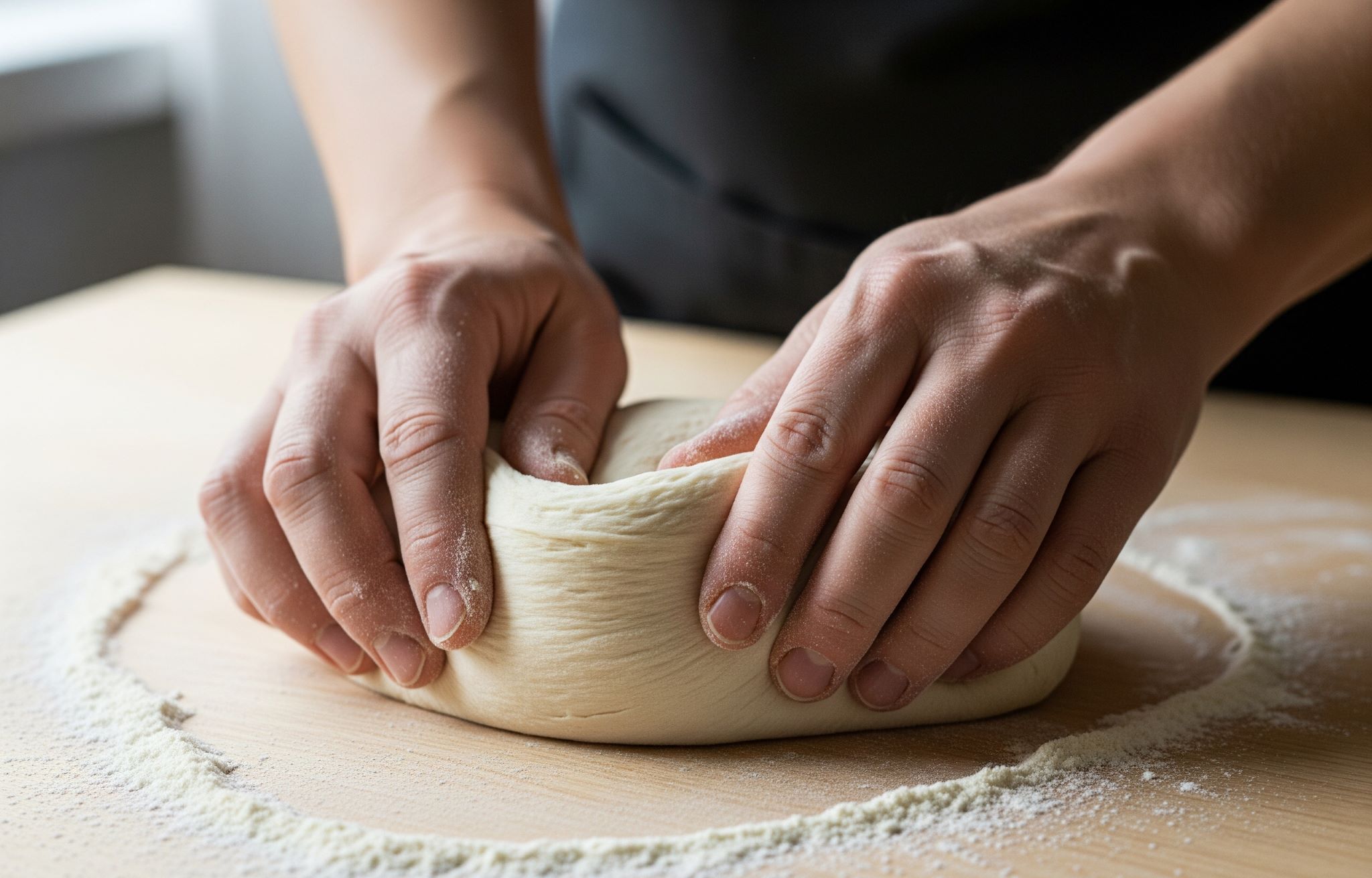Shaping for Beginners
Building the tension that leads to great oven spring.
Shaping is more than just making your dough look pretty before it goes into the banneton. It's a critical step that organizes the gluten network and creates surface tension. This tension acts like a tight skin, encouraging the loaf to rise upwards (oven spring) rather than spread outwards during baking.

The Two Stages of Shaping
Shaping is typically a two-part process.
- Pre-shaping: After bulk fermentation, you gently degas the dough and form it into a loose round. This step evens out the gas bubbles and gives the dough a uniform shape to rest in. After pre-shaping, you let the dough rest on the bench, covered, for 20-30 minutes. This is called the "bench rest," and it allows the gluten to relax before the final, tighter shaping.
- Final Shaping: This is where you create the final tension. You'll take your relaxed, pre-shaped round and form it into its final shape, either a tight boule (round) or a bâtard (oval).
Shaping a Boule (Round Loaf)
- Lightly flour your work surface and your dough. Flip the dough over so the floured side is down.
- Gently stretch the dough into a rough square.
- Fold the top third down to the middle, then the bottom third up over it, like a letter.
- Fold the right third over to the middle, then the left third over that.
- Flip the package over so the seam side is down.
- Cup your hands around the dough and drag it towards you on the counter. The slight friction will cause the dough to round up and tighten its outer "skin." Repeat this a few times until you have a tight, smooth ball.
Key Principles for Success
- Be Gentle, but Firm: You want to create tension without tearing the dough or expelling all the gas you built during bulk fermentation.
- Use Minimal Flour: Use just enough flour to prevent sticking. Too much flour on the work surface will prevent the dough from gripping and tightening as you shape.
- Work with the Dough: If the dough feels very resistant and springs back immediately, let it rest for another 5-10 minutes to relax before continuing.
A Well-Fermented Dough is Easier to Shape
Properly fermented dough has the ideal balance of strength and extensibility, making it much more cooperative during shaping. Use the CrumbScience tracker to ensure your dough is at the perfect stage.
Go to the Tracker